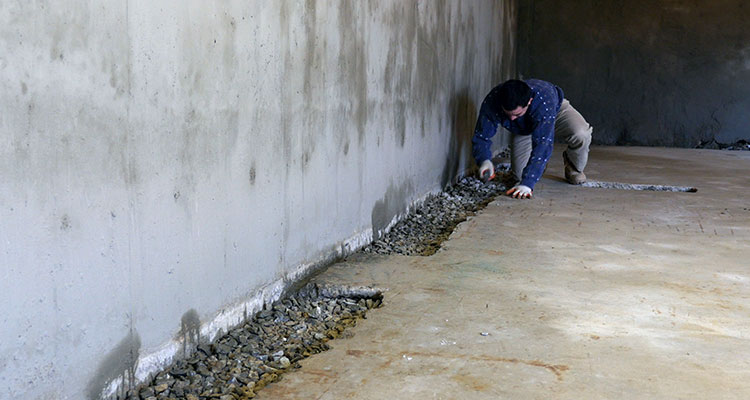
A dry basement is crucial for maintaining a healthy and structurally sound home. One of the most effective methods for achieving a dry basement is through interior basement waterproofing. By addressing water intrusion from inside the basement, interior waterproofing solutions provide long-lasting protection. In this article, we will explore various interior basement waterproofing techniques that can help keep your basement dry and your home safe.
Table of Contents
One popular interior basement waterproofing solution is the application of waterproofing paint or coatings. These specially formulated products create a barrier on the interior walls, preventing water from seeping through. Waterproofing paint is typically made of a combination of resins and additives that provide a waterproof seal. When properly applied, these coatings can significantly reduce water penetration and help keep your basement dry. It’s important to note that waterproofing paint should be applied to clean, dry surfaces for optimal results.
Cracks in the basement walls or floors can be major entry points for water. Interior crack injection is a technique that involves injecting specialized sealants into these cracks, effectively sealing them from the inside. Epoxy or polyurethane-based sealants are commonly used for crack injection. These sealants have excellent adhesive properties and can effectively fill and seal cracks, preventing water intrusion. Interior crack injection is a reliable method for addressing existing cracks and preventing further water damage in your basement.

Interior drainage systems, such as French drains and drain tiles, are effective solutions for managing water intrusion in basements. These systems involve the installation of perforated pipes or channels along the perimeter of the basement floor. As water enters the basement, it is collected by the drainage system and directed towards a sump pump or drain. The sump pump then removes the water from the basement, keeping it dry. Interior drainage systems not only prevent water from pooling in the basement but also help alleviate hydrostatic pressure, reducing the risk of foundation damage.
A sump pump is a vital component of many interior basement waterproofing systems. It is responsible for removing water that collects in the basement, effectively preventing flooding. The sump pump is installed in a designated sump pit, typically located at the lowest point of the basement. As water accumulates in the pit, the pump is activated and pumps the water out through a discharge pipe. It’s important to ensure that the sump pump is properly maintained, regularly tested, and equipped with a battery backup system to ensure its functionality during power outages.
Interior waterproofing membranes, also known as vapor barriers, provide an additional layer of protection against water intrusion. These membranes are typically made of plastic or rubberized materials and are applied to the interior basement walls. They create a physical barrier that prevents moisture from passing through and into the basement. Waterproofing membranes are particularly useful in areas where water penetration is a persistent issue or in cases where exterior waterproofing is not feasible. When combined with other interior waterproofing techniques, these membranes offer comprehensive protection against water damage.
Interior basement waterproofing provides effective solutions for keeping your basement dry and protecting your home’s foundation. Whether through the application of waterproofing coatings, crack injection, interior drainage systems, sump pump installation, or waterproofing membranes, these techniques can significantly reduce water intrusion and ensure a healthier, more secure living environment. Consult with a professional to determine the most suitable interior waterproofing solutions for your specific basement needs.